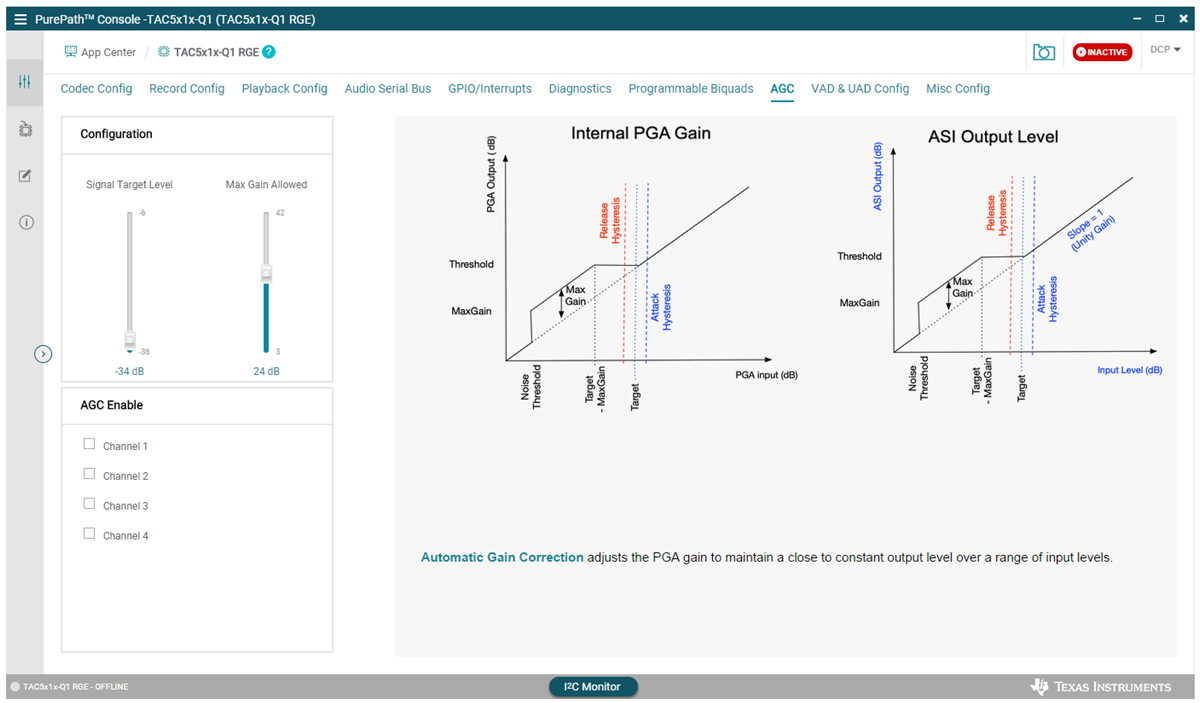SLAU903 October 2023
- 1
- Description
- Get Started
- Features
- Applications
- 6
- 1Evaluation Module Overview
- 2Hardware
-
3Software
- 3.1 Software Description
- 3.2 PurePath Console 3 Installation
- 3.3 TAx5x1x-Q1 EVM GUI
- 3.4 Configuration Examples
- 3.5 System Overview
- 4Hardware Design Files
- 5Additional Information
- 6References
3.3.2.6.3 Automatic Gain Control (AGC) Tab
The AGC parameters are global and can be configured in the AGC tab. Each channel must have the AGC enabled in the audio config tab for the AGC configuration to become active. These software controls are grayed out and inactive while the device is in active mode.
 Figure 3-26 Automatic Gain Control (AGC) Tab
Figure 3-26 Automatic Gain Control (AGC) Tab